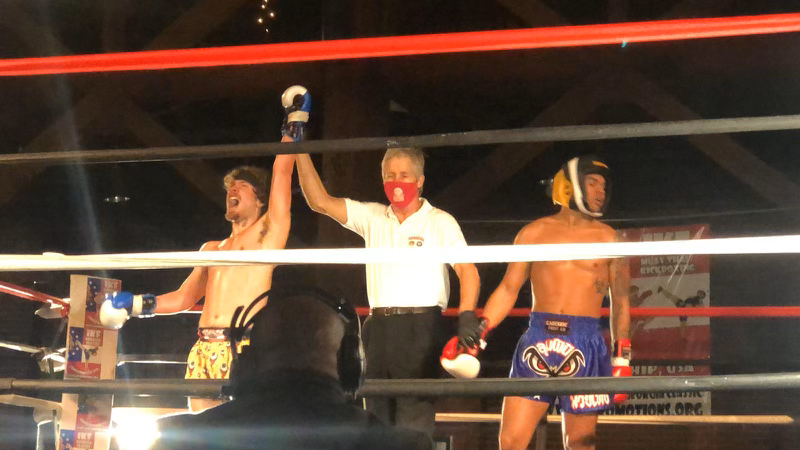Muay Thai, often referred to as the “Art of Eight Limbs,” is a captivating martial art that has a rich history dating back centuries. If you’ve ever wondered about the age of Muay Thai, you’re in for an enlightening journey. In this comprehensive guide, we will explore the origins and age of Muay Thai, shedding light on how this martial art has evolved over the years and continues to thrive as a timeless combat sport.
The Ancient Roots of Muay Thai
Muay Thai’s origins can be traced back to the ancient Kingdom of Siam, which is modern-day Thailand. The art of Muay Thai began to take shape over a thousand years ago when Thai warriors needed form of hand-to-hand combat that would be effective in battle. It was a fighting style born out of necessity and refined over centuries.
The early iterations of Muay Thai were relatively unstructured, with little in the way of rules or protective gear. This raw and practical form of combat included the use of fists, elbows, knees, and shins—hence the nickname “Art of Eight Limbs.” Muay Thai quickly became an essential skill for Thai soldiers.
Historical Milestones in Muay Thai
While the roots of Muay Thai date back over a millennium, there are several significant historical milestones that have shaped its development:
- Early Siamese Warfare (11th Century): Muay Thai’s origins can be traced to the 11th century when Siamese (Thai) soldiers developed combat techniques for use in warfare.
- Ayutthaya Period (14th to 18th Century): During the Ayutthaya Kingdom, Muay Thai began to take on a more organized and formalized structure, with the introduction of rules and codes of conduct.
- Rama I (Late 18th Century): Rama I, the founder of the Chakri Dynasty, played a significant role in popularizing Muay Thai. He established royal fighting academies, where the art was taught to the public.
- Modernization (20th Century): In the early 20th century, Muay Thai underwent significant modernization and rule standardization. This modernization process led to the sport’s recognition as a formalized martial art and combat sport.
Evolution of Muay Thai as a Sport
While Muay Thai has ancient roots as a combat art, it has evolved significantly over the years. One of the most notable transformations occurred when rules and regulations were introduced to make the sport safer and more spectator-friendly. Key developments include:
- Introduction of Gloves: Gloves were introduced in the 1920s to reduce injuries and make Muay Thai a safer sport.
- Weight Classes: The implementation of weight classes in the mid-20th century allowed for fairer and more competitive matchups.
- International Recognition: Muay Thai gained international recognition and began to spread beyond Thailand’s borders. It has become a global phenomenon, with competitions and practitioners worldwide.
- Incorporation in Mixed Martial Arts (MMA): Muay Thai techniques, such as striking, clinching, and knee and elbow strikes, have become essential components of MMA, contributing to the art’s popularity.
Timeless Significance of Muay Thai
Muay Thai is more than just a martial art or a sport; it is deeply woven into the cultural fabric of
Thailand. It is considered the national sport of Thailand and is a source of national pride. Some key
elements that make Muay Thai significant include:
- Cultural Heritage: Muay Thai is integral to Thai culture and traditions, with fighters celebrated as national heroes.
- Self-Defense and Combat Sport: Beyond its cultural importance, Muay Thai is revered for its effectiveness as a self-defense system and a competitive combat sport.
- Stress Relief: The physical intensity of Muay Thai serves as a healthy outlet for stress and
tension. Muay Thai emphasizes mental discipline, focus, and perseverance, which can be applied to various aspects of life. - Stress Relief: The physical intensity of Muay Thai serves as a healthy outlet for stress and tension.
- Community and Camaraderie: Muay Thai gyms often foster a sense of community and camaraderie among practitioners, creating a supportive environment for learning and growth.
Conclusion
Muay Thai is an ancient martial art and combat sport with a rich history dating back over a thousand years. While it has evolved and modernized, its roots in Siamese warfare and its cultural significance remain timeless. Muay Thai’s enduring appeal can be attributed to its effectiveness as a self-defense system, physical fitness benefits, mental discipline, and its deep connection to Thai culture and traditions.
Whether you’re a practitioner, a fan of combat sports, or simply curious about the age of Muay Thai, it’s clear that this art has not only stood the test of time but has also evolved to become a global phenomenon. Muay Thai’s history and significance continue to inspire and empower individuals around the world, making it a martial art that goes beyond the physical—it’s a way of life.

